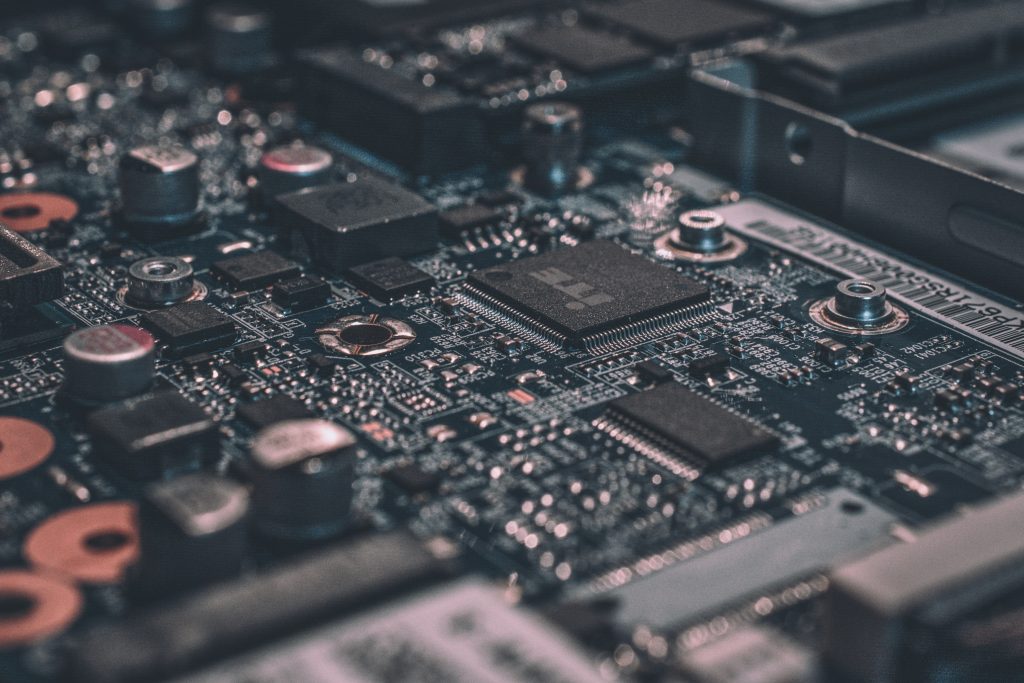If you’re a budding photographer, one of the biggest decisions you’ll have to make is choosing between a DSLR and a mirrorless camera. With a multitude of options available in the market, it can be overwhelming to decide which one is right for you. This article aims to simplify the process by providing you with essential information and expert insights, helping you make an informed decision. Whether you’re looking for superior image quality or a lightweight companion for your adventures, we’ve got you covered. So, let’s dive into the world of cameras and find out which one suits your needs best.

Image Quality
Sensor Size
When it comes to image quality, one important factor to consider is the sensor size. A larger sensor generally allows for better image quality, as it can capture more light and detail. DSLRs traditionally have larger sensors than mirrorless cameras, which gives them an advantage in terms of image quality. However, mirrorless cameras have been catching up in recent years, and some models now feature full-frame sensors that can rival DSLRs in terms of image quality.
Resolution
Resolution is another important aspect of image quality. It refers to the number of pixels that make up an image, with higher resolution cameras producing more detailed photos. Both DSLRs and mirrorless cameras come in a range of resolutions, from entry-level models with around 20 megapixels to professional-grade cameras with over 50 megapixels. Keep in mind that while a higher resolution may provide more detail, it also requires more storage space and may lead to larger file sizes.
Dynamic Range
Dynamic range refers to the range of light and dark tones that a camera can capture in a single image. It is especially important in high-contrast situations, such as landscapes with bright skies and dark shadows. DSLRs are known for their excellent dynamic range, as their larger sensors can capture a wider range of tones. However, mirrorless cameras have made significant advancements in this area, and many now offer competitive dynamic range capabilities.
Low Light Performance
The ability to perform well in low light conditions is crucial for many photographers, especially those who shoot in challenging environments or at night. DSLRs have traditionally excelled in low light situations due to their larger sensor sizes, which allow for better light gathering. However, advancements in sensor technology have resulted in mirrorless cameras closing the gap in terms of low light performance. Many mirrorless cameras now feature high ISO capabilities and noise reduction algorithms that produce impressive results in low light conditions.
Size and Weight
DSLR
DSLR cameras are synonymous with their relatively bulky size and weight. The mirror mechanism inside a DSLR adds to its overall size, as well as the need for a larger battery to power the camera. While this can be seen as a drawback for some photographers, others appreciate the solid feel and ergonomic grip that comes with a larger camera body. Additionally, the larger size of DSLRs allows for better balance when using heavier lenses, which can be advantageous in certain shooting situations.
Mirrorless
One of the primary advantages of mirrorless cameras is their smaller and lighter form factor. By eliminating the need for a mirror mechanism, mirrorless cameras can be considerably smaller and lighter than their DSLR counterparts. This makes them a popular choice for photographers who value portability and want to carry their camera gear with them wherever they go. The compact size of mirrorless cameras also makes them less obtrusive, allowing photographers to blend in more seamlessly and capture candid moments.

Lens Options
DSLR
DSLRs have been on the market for a longer time than mirrorless cameras, which means there is an extensive range of lenses available for these camera systems. Whether you’re looking for wide-angle lenses, telephoto lenses, or specialty lenses, DSLRs offer a wide variety to choose from. Lens manufacturers have had years to develop and refine their lens lineups, ensuring that photographers have ample options to suit their specific needs. Additionally, due to the popularity of DSLRs among professional photographers, there is a vast second-hand market for lenses, making it easier to find affordable options.
Mirrorless
While the mirrorless camera market is still relatively young compared to DSLRs, lens options for mirrorless systems have been expanding rapidly. Many camera manufacturers now offer a diverse range of lenses for their mirrorless cameras, covering a wide array of focal lengths and specialties. In addition, due to the design of mirrorless cameras, adapters are available to use lenses from other camera systems, further expanding the lens options available. It’s worth noting that some mirrorless systems may not have as many specialty lenses available as DSLRs, but this gap is closing as the popularity of mirrorless cameras continues to rise.
Autofocus
DSLR
DSLRs have long been known for their reliable and fast autofocus systems. The dedicated phase-detection autofocus sensors in DSLRs allow for quick and accurate focusing, even in challenging shooting conditions. DSLRs also often have a larger number of autofocus points, offering more flexibility in composing your shots. Whether you’re photographing fast-moving subjects or capturing portraits, DSLRs excel at tracking and maintaining focus on the intended subject.
Mirrorless
Mirrorless cameras have made significant advancements in autofocus technology in recent years. Many mirrorless systems now feature hybrid autofocus systems that combine phase-detection and contrast-detection autofocus, providing excellent focus performance. Mirrorless cameras also tend to have a higher number of autofocus points, allowing for precise focusing across the frame. In addition, certain mirrorless models boast advanced features such as eye- and face-detection autofocus, making it easier to achieve tack-sharp focus on human subjects.

Speed and Burst Mode
DSLR
If you require speed and the ability to capture a high number of frames per second, DSLRs have an advantage. DSLR cameras typically have faster burst rates, allowing for continuous shooting at several frames per second. This makes them well-suited for photographing fast-paced action or capturing fleeting moments. DSLRs also offer a robust buffer capacity, enabling you to capture a series of images without the camera slowing down or becoming unresponsive.
Mirrorless
While mirrorless cameras may not match DSLRs in terms of burst rates, they still offer impressive speed capabilities. Many mirrorless cameras can shoot at speeds of up to 20 frames per second, making them suitable for capturing fast-moving subjects. Additionally, mirrorless cameras often have electronic shutters, which eliminate the mechanical movements found in DSLRs and allow for silent shooting. This can be advantageous in situations where noise can be disruptive, such as during weddings or wildlife photography.
Video Capability
DSLR
DSLRs have long been popular among videographers due to their excellent video capabilities. DSLRs with their larger sensors provide excellent image quality, depth-of-field control, and low-light performance, making them suitable for a wide range of video projects. DSLRs often offer manual control over exposure settings, focus peaking, and the ability to use a wide range of lenses, further enhancing their versatility for video shooting. Many models also have microphone and headphone jacks, allowing for high-quality audio recording.
Mirrorless
Mirrorless cameras are increasingly becoming a top choice for videographers due to their advanced video features. Many mirrorless cameras can shoot 4K video, offering exceptional image quality and detail. These cameras often incorporate technologies such as in-body image stabilization (IBIS) and focus tracking, further enhancing the video shooting experience. Moreover, mirrorless cameras tend to be lighter and more compact than DSLRs, making them easier to handle and maneuver when shooting videos.
Battery Life
DSLR
When it comes to battery life, DSLRs generally outperform mirrorless cameras. The larger size of DSLR bodies allows for larger batteries, which can provide significantly longer shooting time. This can be especially important for photographers who shoot for extended periods or who are traveling in remote locations without access to charging facilities. DSLRs typically have a longer battery life and spare batteries are readily available, reducing the chances of running out of power during a shoot.
Mirrorless
While mirrorless cameras tend to have shorter battery life compared to DSLRs, they have been improving in this aspect. The smaller size of mirrorless cameras necessitates smaller batteries, which results in fewer shots per charge. However, many mirrorless cameras now offer features like USB charging or the ability to charge the camera through a power bank, making it easier to extend shooting time on the go. It’s also worth noting that carrying spare batteries is advisable for mirrorless cameras to ensure uninterrupted shooting.
Viewfinder
DSLR
One of the defining features of a DSLR is its optical viewfinder. DSLRs use a mirror and prism system to direct the light coming through the lens to the viewfinder, providing a clear and accurate representation of the scene. Optical viewfinders offer a lag-free and natural viewing experience, allowing photographers to see exactly what their eyes see. Additionally, DSLR viewfinders work well in bright sunlight, as the optical design does not rely on electronic displays that can be affected by excessive light.
Mirrorless
Mirrorless cameras, on the other hand, do not have an optical viewfinder. Instead, they rely on electronic viewfinders (EVFs) or rear LCD screens for composition and framing. EVFs use a small LCD display to show a real-time preview of the scene, simulating the experience of an optical viewfinder. One advantage of EVFs is that they can provide additional information such as histograms, focus peaking, and electronic level indicators. They also allow for a live preview of exposure settings and white balance changes, helping photographers achieve accurate exposures in challenging lighting conditions.
User Interface
DSLR
DSLRs typically have a more traditional user interface, with buttons and dials placed conveniently on the camera body. This tactile approach allows for quick and intuitive control over various camera settings without relying heavily on menus or touchscreen navigation. Many DSLRs also have multiple customizable buttons, allowing photographers to personalize the camera’s operation to suit their shooting style. The physical controls on DSLRs make them well-suited for photographers who prefer a hands-on approach and want quick access to essential settings.
Mirrorless
Mirrorless cameras generally offer a more modern and customizable user interface. The electronic nature of these cameras allows for customizable menus, touchscreen control, and the ability to assign functions to different buttons or dials. Mirrorless cameras often provide direct access to settings using the rear LCD screen, making it easy to adjust shooting parameters without taking your eye away from the viewfinder. This touchscreen interface can be particularly helpful for those who are accustomed to using smartphones or touch-based devices.
Cost
Camera Body
When considering the cost of a camera, it is important to take into account both the initial purchase price and the long-term investment. DSLRs, especially entry-level models, often have a lower upfront cost compared to mirrorless cameras. This can make them an attractive choice for budget-conscious photographers or those just starting in photography. Additionally, the availability of a wide range of used DSLRs in the market can further reduce the cost of entry. However, it’s important to evaluate the long-term investment, considering factors such as future lens upgrades, accessories, and potential resale value.
Mirrorless cameras, on the other hand, tend to be more expensive initially, particularly when opting for higher-end models or full-frame sensor cameras. However, the gap in price between DSLRs and mirrorless cameras has been decreasing as mirrorless technology becomes more mainstream. Additionally, the growing popularity of mirrorless cameras means that there is a wider selection of affordable options available. Furthermore, it is worth considering the long-term savings on weight and size, as mirrorless systems often offer compact and lightweight lenses compared to DSLRs.
Lenses and Accessories
When it comes to lenses and accessories, the cost can also vary between DSLRs and mirrorless cameras. Due to the long-standing presence of DSLRs in the market, there is a vast selection of lenses available from various manufacturers. This range allows for greater flexibility in terms of price points, with options available for different budgets and photographic needs. DSLRs also have an advantage in terms of lens compatibility, as adapters can be used to mount lenses from different camera systems, further expanding the lens options available.
Mirrorless systems have been rapidly expanding their lens lineups, providing an increasing number of options for photographers. However, the availability and affordability of specialty lenses may still be more limited compared to DSLRs. It is important to research the lens ecosystem of a particular mirrorless system to ensure that it can meet your specific needs. In terms of accessories, both DSLRs and mirrorless cameras have a wide range of options available, including external flashes, external battery grips, and remote triggers. It’s worth considering any potential accessory needs and their associated costs when making your camera system decision.
In conclusion, when deciding between a DSLR and mirrorless camera, there are several factors to consider. Image quality, including sensor size, resolution, dynamic range, and low light performance, should be carefully evaluated based on your specific photography needs. Size and weight play a significant role, with DSLRs offering a more substantial and balanced feel, while mirrorless cameras excel in portability and discreetness. Lens options and autofocus capabilities have improved over the years in both DSLRs and mirrorless cameras, but DSLRs still maintain an edge in certain areas. Speed and burst mode, video capability, battery life, viewfinder type, user interface, and cost are also crucial factors to consider when making your decision. Ultimately, the choice between a DSLR and mirrorless camera will depend on your individual preferences, shooting style, and budget.
